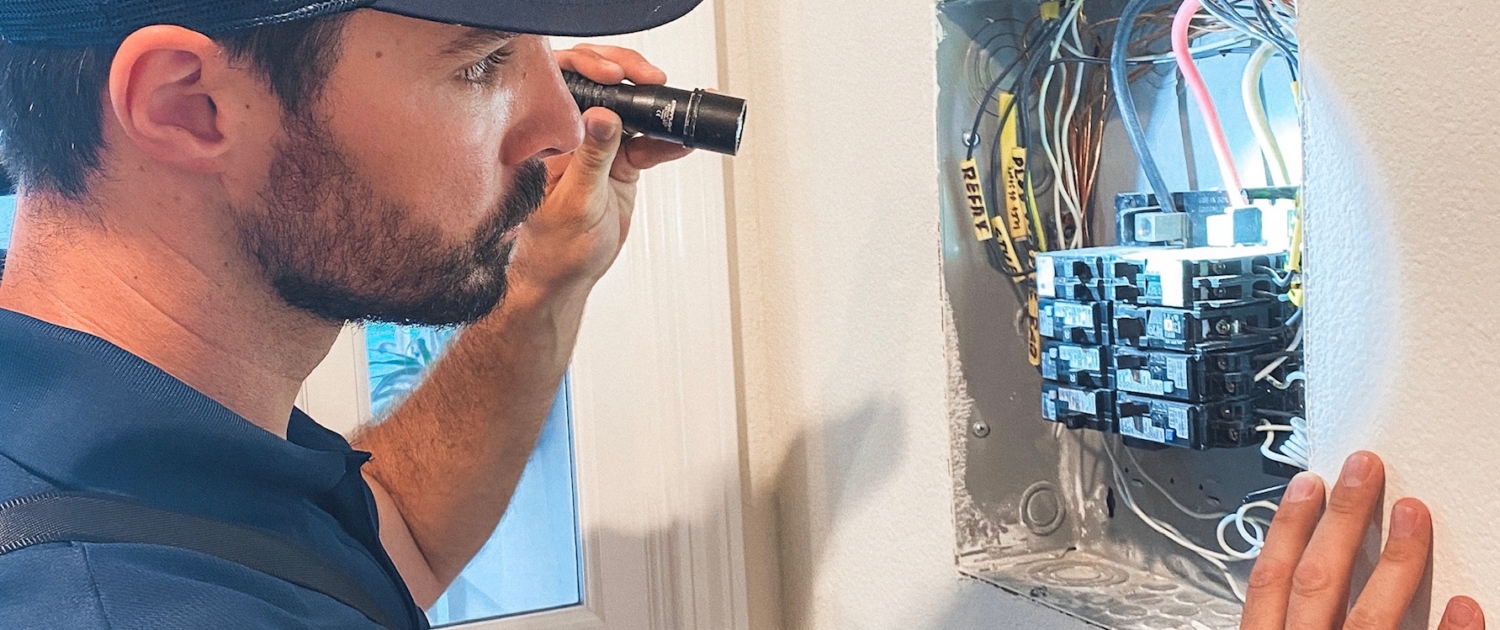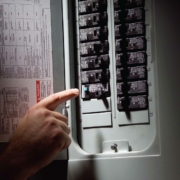What is an AFCI breaker and how does it work.
AFCI circuit breakers monitor their respective electrical circuits for problems that could cause a spark. They sound a lot like their cousins called GFCI breakers. However, they work differently. GFCI breakers protect the home occupants from accidental shock, whereas an AFCI breaker protects against sparks and fires.
AFCI circuit breakers use advanced electronics to “sense” normal conditions and for dangerous situations. Operating an electric-powered vacuum cleaner, for example, will produce small arcs or sparks. This is considered a regular operation and would not be flagged by the AFCI circuit breaker.
An example of a dangerous Condition is when someone switches a light switch and a spark is generated in the junction box, causing the protection device to cut power to the circuit. Other examples of dangerous conditions are short circuits from one wire to another are caused by damaged conductor insulation or poor installation.
What does the national electric code say about AFCI breakers
2017 and subsequent National Electric Code section 210.12 does not arbitrarily require homeowners to switch over to AFCI’s. However, suppose you are replacing components in your electrical panel or modifying the branch circuits. In that case, your electrician will also have to install AFCI breakers or combo AFCI/GFCI breakers to stay code compliant. Just replacing your panel enclosure does not necessitate having to replace your breakers, as long as no circuits have been modified in the process.

How to know if you have AFCI breakers, and what to do if they cut power to a circuit.
If you notice some of your outlets aren’t working, or some interior lights won’t turn on, one of your arc fault circuit breakers may have tripped. Go out to your electrical, carefully open the dead front cover and get a look at your breakers. Look for breakers with small buttons on them and a label that says “AFCI” on them. If you don’t see any buttons on them, then you don’t have any AFCI breakers. The buttons are “test” buttons. Pressing them will test the breaker’s functionality to cut power to a circuit.
Note where the levers are positioned; they should be all the way over to the “on” side. Find any breakers that have tripped and reset them. If they do not reset on the first or second try, time to call an electrician.
 Should you replace your non AFCI breakers?
Should you replace your non AFCI breakers?
Should you replace your existing breakers with an AFCI circuit breaker? Well, that depends. Installing AFCI breakers on all 15 and 20 amp branch circuits in your home would be a significant safety upgrade if you don’t mind the cost of doing so.




Leave a Reply
Want to join the discussion?Feel free to contribute!